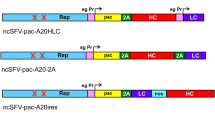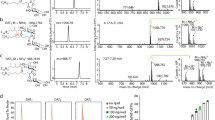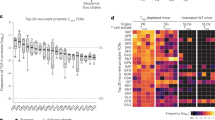Abstract
Leprosy displays a remarkable spectrum of symptoms correlating with the T-cell-mediated immune reactivity of the host against the causative organism, Mycobacterium leprae1. At one pole of this spectrum are lepromatous leprosy patients showing a M. leprae-specific T-cell unresponsiveness2; at the other are tuberculoid leprosy patients displaying both acquired immunity and delayed-type hypersensitivity against M. leprae which are thought to be conferred by helper T (Th) cells1,3–5. Because well-defined M. leprae antigens are crucial for the prevention and control of leprosy1,6,7, we have cloned M. leprae- reactive T cells (TLC) of the helper phenotype from a tuberculoid leprosy patient. As reported here, these TLC show an unexpected diversity in the recognition of M. leprae and related mycobacteria, which is different from that exhibited by monoclonal antibodies8,9. Half of these TLC are completely or almost M. leprae-specific, whereas the other half are cross-reactive with most or all other mycobacteria. A M. leprae protein of relative molecular mass (Mr) 36,000 (36K) defined by a M. leprae-specific monoclonal antibody7,8,10 stimulates 4 out of 6 TLC tested. Each of these TLC recognizes a different antigenic determinant, one of which is M. leprae-specific. The previous paper describes other M. leprae-specific T-cell clones half of which recognize an epitope on a M. leprae protein of Mr 18 K.
This is a preview of subscription content, access via your institution
Access options
Subscribe to this journal
Receive 51 print issues and online access
$199.00 per year
only $3.90 per issue
Buy this article
- Purchase on Springer Link
- Instant access to full article PDF
Prices may be subject to local taxes which are calculated during checkout
Similar content being viewed by others
References
Bloom, B. R. & Godal, T. Rev. infect. Dis. 5, 765–780 (1983).
Bloom, B. R. & Mehra, V. Immun. Rev. 80, 5–28 (1984).
Rees, R. J. W. Nature 211, 576 (1966).
Patel, P. J. & Lefford, M. J. Infect. Immunity 19, 87–93 (1978).
Lowe, C., Brett, S. J. & Rees, R. J. W. Clin. exp. Immun. 61, 336–342 (1985).
Mitchison, N. A. Nature 308, 112–113 (1984).
Young, R. A. et al. Nature 316, 450–452 (1985).
Engers, H. D. et al. Infect. Immunity 48, 603–605 (1985).
Ivanyi, J., Morris, J. A. & Keen, M. in Monoclonal Antibodies Against Bacteria (eds Macario, A. J. L. & Macario, E. C.) (Academic, New York, in the press).
Klatser, P. R., de Wit, M. Y. L. & Kolk, A. H. J. Clin. exp. Immun. (in the press).
Mehra, V., Brennan, P. J., Rada, E., Convit, J. & Bloom, B. R. Nature 308, 194–196 (1984).
Haanen, J. B. A. G. et al. Scand. J. Immun. (in the press).
Elferink, B. G., Ottenhoff, T. H. M. & de Vries, R. R. P. Scand. J. Immun. 22, 585–589 (1985).
Young, D. B., Fohn, M. J., Khanolkar, S. R. & Buchanan, T. M. Clin. exp. Immun. 60, 546–552 (1985).
Ottenhoff, T. H. M., Elferink, B. G., Hermans, J. & de Vries, R. R. P. Hum. Immun. 13, 105–116 (1985).
Kaufmann, S. H. E. Cell Immun. 83, 215–220 (1984).
Kingston, A. E. & Colston, M. J. Acta leprologica 2, 369–377 (1984).
Stanford, J. L. in Biology of Mycobacteria Vol. 2 (eds Ratledge, C. & Stanford, J. L.) 85–127 (Academic, London, 1983).
Lamb, J. R., Eckels, D. D., Lake, P., Woody, J. N. & Green, N. Nature 300, 66–69 (1982).
Manca, F., Clarke, J. A., Miller, A., Sercarz, E. E. & Shastri, N. J. Immun. 133, 2075–2078 (1984).
Klatser, P. R., van Rens, M. M. & Eggelte, T. A. Clin. exp. Immun. 56, 537–544 (1984).
Author information
Authors and Affiliations
Rights and permissions
About this article
Cite this article
Ottenhoff, T., Klatser, P., Ivanyi, J. et al. Mycobacterium leprae-specific protein antigens defined by cloned human helper T cells. Nature 319, 66–68 (1986). https://doi.org/10.1038/319066a0
Received:
Accepted:
Issue Date:
DOI: https://doi.org/10.1038/319066a0
This article is cited by
-
Partial purification and characterization of low molecular weight antigens of Salmonella enteritidis 11RX
Immunology & Cell Biology (1990)
-
Isolation of CD4-CD8-mycobacteria-reactive T lymphocyte clones from rheumatoid arthritis synovial fluid
Nature (1989)
-
Immunological study of the defined constituents of mycobacteria
Springer Seminars in Immunopathology (1988)
-
Human leukocyte antigens (HLA) and mycobacterial disease
Springer Seminars in Immunopathology (1988)
Comments
By submitting a comment you agree to abide by our Terms and Community Guidelines. If you find something abusive or that does not comply with our terms or guidelines please flag it as inappropriate.



